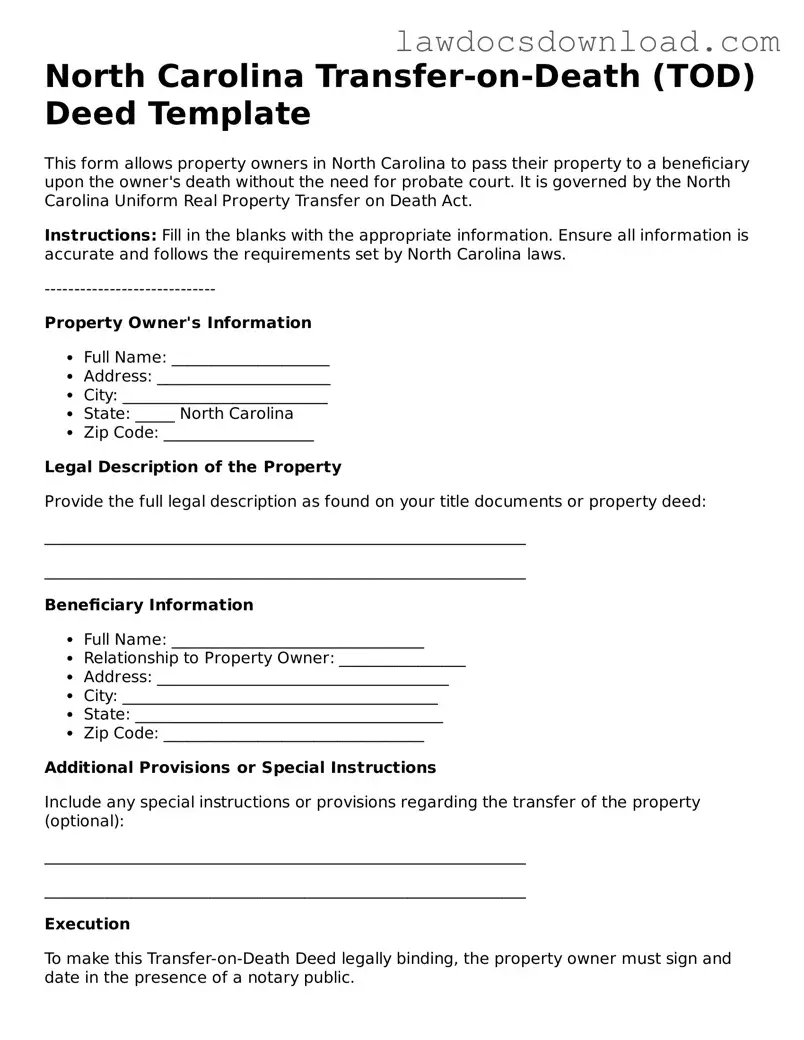North Carolina Transfer-on-Death (TOD) Deed Template
This form allows property owners in North Carolina to pass their property to a beneficiary upon the owner's death without the need for probate court. It is governed by the North Carolina Uniform Real Property Transfer on Death Act.
Instructions: Fill in the blanks with the appropriate information. Ensure all information is accurate and follows the requirements set by North Carolina laws.
-----------------------------
Property Owner's Information
- Full Name: ____________________
- Address: ______________________
- City: __________________________
- State: _____ North Carolina
- Zip Code: ___________________
Legal Description of the Property
Provide the full legal description as found on your title documents or property deed:
_____________________________________________________________
_____________________________________________________________
Beneficiary Information
- Full Name: ________________________________
- Relationship to Property Owner: ________________
- Address: _____________________________________
- City: ________________________________________
- State: _______________________________________
- Zip Code: _________________________________
Additional Provisions or Special Instructions
Include any special instructions or provisions regarding the transfer of the property (optional):
_____________________________________________________________
_____________________________________________________________
Execution
To make this Transfer-on-Death Deed legally binding, the property owner must sign and date in the presence of a notary public.
_____________________________ __________________
Property Owner's Signature Date
State of North Carolina
County of ____________________
This document was acknowledged before me on ______________ (date) by _______________________________ (name of property owner).
_____________________________ __________________
Notary Public's Signature Date
My commission expires: ____________________
This Transfer-on-Death Deed must be recorded with the Register of Deeds in the county where the property is located before the death of the property owner to be effective.
